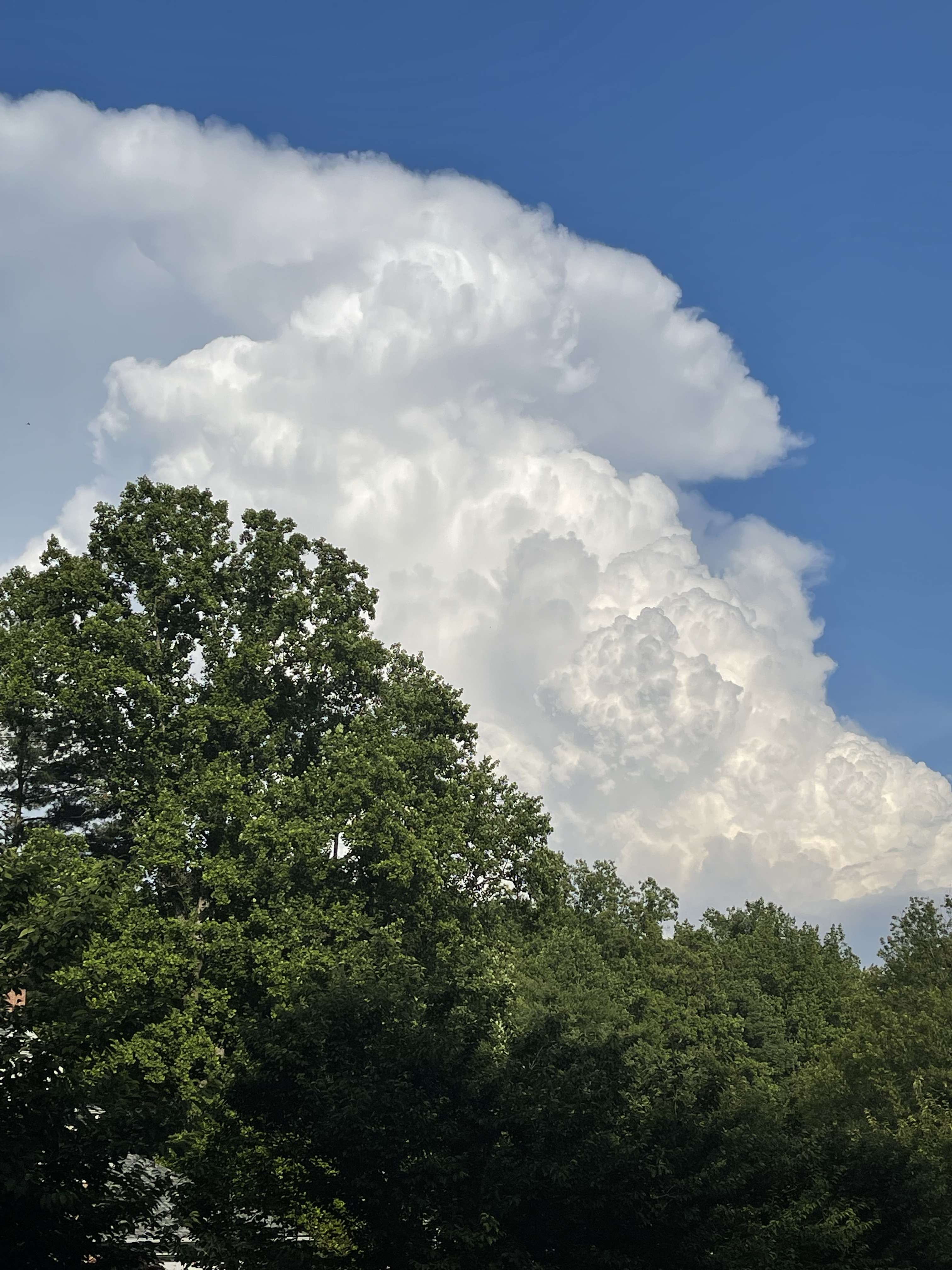-
Posts
44617 -
Joined
-
Last visited
-
Days Won
262
Everything posted by Phil
-
You mean separate forums for different regions? I think we should have a vote on the merge plan that has been floated around. I agree that we should have different pinned threads for each "region", but what good does dividing up the community into entirely different forums do? We're not a big enough community, and we won't be unless we merge the forums. Unless the goal is to have the same 5 or 6 folks posting in each forum, with zero inter-forum communication...
-
Reasoning? I don't see a problem with it.
-
I can't stop laughing: http://www.numberwatch.co.uk/warmlist.htm
-
I'm not expecting "glowing responses" to anything I post, but I do expect a meager level of respect and civility, given the fact that everything I've done here has been well-intentioned. I make a few "out-of-region" posts now and again, but the majority of my contributions are scientific in nature and apply to this subforum in one way or another...at least I hope they can be viewed as contributions... Who gives a rat's azz whether or not someone lives in a "snowier" climate than someone else? Is that what drives the level of "respect" and/or "acceptance" you get around here? If true, that's quite sad, in my opinion.
-
Hope it's ok if I post these.. Winter just refuses to give up...snow and 50mph winds today http://catchmypicture.com/f/u2ghhV/640.jpg http://catchmypicture.com/f/XF0Zcw/800.jpg http://catchmypicture.com/f/U5zKV0/800.jpg
-
Agreed there. I could never live in a big city where people fret over every snowflake. My sister in DC says people there flock to the grocery stores when snow showers are in the forecast..lol.. I read the Wikipedia page on Houghton though..very nice place if you're an icepussy..but otherwise its probably too extreme for me: "Climate Houghton has a humid continental climate but the (typically) long and snowy (due to lake-effect snow, with an average of 218 inches (5.54 m))[29] winters make the city feel as though it is in a climate much further north. It is sometimes said that Houghton has “two seasons: winter’s here and winter’s coming.”[30] While Houghton’s winters may be the subject of humor, residents take the subject of snow and winter very seriously. Houghton is one of the premier “Winter Cities” found anywhere. A “Winter City” is a community that accommodates winter, celebrates it, and whose residents generally enjoy the season by participating in a variety of outdoor activities. Among those activities are cross country skiing, snow-shoeing, ice fishing, snowmobiling, ice skating and outdoor ice hockey, among other activities. Houghton celebrates winter through the “Winter Carnival” organized by Michigan Tech every year in February.[31] Houghton's summer climate tends to be especially pleasant, as hot temperatures are often moderated by the cool waters of the nearby Lake Superior. Only once, in July 1988, have temperatures hotter than 100 °F (38 °C) been reported. The coldest temperature on record has been −26 °F (−32 °C) on 21 January 1984, which is actually less extreme than many places to the west, and the heaviest monthly snow 119 inches (3.02 m) in December 1972. The highest mean snow cover has been 43 inches (1.09 m) on several occasions, most recently in February 1996."
-
Horrible. I've almost forgotten what a warm day feels like. My last 70F+ high temperature was almost 7 months ago.
-
I getcha. Just don't be afraid to look out-of-region. I made the decision to go out-of-region in 1996 when I moved here, and I don't regret it...it was very fun. Here's a link, if you want to give it a look: http://www.cityofhoughton.com Home prices are great, too: http://m.realtor.com/#results?loc=Houghton%2CMI
-
I think the city of Houghton MI would be a dream for Jim, ranked as one of the top 100 small towns in America: http://www.cityofhoughton.com Trees are very much like the PNW, it's basically a peninsula that sticks out onto Lake Superior. The snowfall average is over 200" with frequent lake-effect blizzards, and the summer days rarely get past 75 degrees. Plus they get big thunderstorms in the Summer. I've experienced lake effect snowfall, and I've gotta say, there's nothing like it. You can literally see snowfall rates topping 6"/hr on a semi regular basis.
-
Yes, but I'm not Jim. The summers in Chelan can get hot/dry at times. I like dry heat, but I'm pretty sure Jim would prefer a cooler, crispier summer w/o the clouds and drizzle. I'm not moving to Michigan or Maine due to their consistently harsh winters. But they're great if you love snow and hate summer heat.
-
Wow, that monster storm over the NE has produced a flurry of wind gusts above 120mph over the mainland of Atlantic Canada..sheesh. I wouldn't be surprised if 150-160mph gusts occurred over the water somewhere given the warm seclusion.
-
I'm trying to act subdued, but I'm actually bullish on 2014-15. People tend to weight ENSO much too heavily. Arguably, solar and stratosphere-mesosphere forcings are just as important..take 2010-11 as an example. Strong La Niña with a very low TAAM..hence a lot of warm outlooks for the central/eastern US. However, the Solar-Stratospheric forcings won the day. The Sun totally finger banged the tropical pacific. The 2013-14 winter is another good example...why was the Rossby/EAAM regime so stable? You guessed it.
-
Winters of 1965-66 and 1968-69 were very similar in terms of the QBO, SAO, Solar, ENSO, and AAM components. The winter of 2014-15 should feature all of the same dynamics. The only wild card is the Sun..if the Sun goes nuts it could ruin things. However, the fact that they were very similar supplies a higher level of confidence that 2014-15 will follow in lockstep, at least to an extent.. Almost scary how similar they are..2014-15 could be a high confidence forecast: 1965-66: http://catchmypicture.com/NcrcvR.jpg 1968-69: http://catchmypicture.com/4Tu4Fj.jpg
-
Where did Flatiron go?
-
Definitely. Logging took place here in the earlier years and led to a crapload of landslides along backbone ridge, which is where I live now. You can still see the evidence left behind. It's ashame, some of those trees were 200-300yrs old. Now the remaining big trees are really exposed to the wind. The Derecho/Sandy combo in 2012 took out 50-75% of them. Only 7 remain in the vicinity of my house, only 3 left on my property.
-
Kinda, OT, but lol @ the GGEM...it's progging 100-120mph winds and 2ft of snow for cape cod..954mb triple phaser. Might be time for a road trip..
-
If all goes well. . Could easily be another 1994-95.
-
Exactly..ridging is strongly favored over the NPAC in a +QBO..especially during solar maximum. As the +QBO windfield begins to decay during late summer/early autumn, we'll see more Aleutian/NPAC troughing develop..however it's not possible to know exactly when the shift will occur. However, this does not necessarily spell doom for the PNW next winter. In fact, I think there's a 50/50 chance that the Midwest/NE will torch December-January 2014-15. Not a given yet, but definitely possible.
-
I'm referring to the solar flux (irradiance), not the solar wind (charged particle flux(es). I'll link the latest peer-reviewed literature on this matter when I get home. The Sun forces the climate system in many different manners, on many different timescales...and the system response will vary greatly based on additional factors. It's a complicated relationship, and we still haven't figured it all out yet despite some fantastic correlations. The solar wind is a major forcing agent on the tropics, mid-upper atmospheric circulation(s), and chemistry. However, the climactic-effects we care about will take place on a MUCH longer timescale, because this forcing is not directly tapping the thermal budget, and is very low frequency, as is the inertia-laden system we call Earth. We're talking a 7-17 year resolution here..and everything will be affected in some manner. Irradiance has a much shorter-term impact on the global circulations/thermal gradients/tropical convection/etc. The forcing is very insignificant, and so are the effects on the climate as a whole. The system response to TSI forcing therefore hinges on various additional parameters/boundary conditions.
-
You've gotta admit, the cold air over North America was impressive. This winter was one of the all-time coldest in the Great Lakes/Midwest. The lack of a -NAM and a strong PV/subdued SAO lead prevented a more persistent, widespread envelope of colder anomalies, but it was a step in the right direction. This was a classic solar max/+QBO winter...featuring a subdued tropical forcing under the thermal field associated with the QBO westerlies. The result was a steady, unperturbed Hadley Cell/Rossby wave regime through the winter, governed almost solely via external forcings. The one mistake I made in my winter forecast was assuming the tropical forcing would try to push through the unfavorable thermal cap, allowing for frequent retrogression over the NPAC, hence more of a SE ridge/expanse of the SW Atlantic ridge. We saw some of that, but not nearly to the extent I predicted. In both 2012-13 and 2013-14, the problem for the PNW was an overly strong PV, and unfavorable tropics. It would be ironic, but the current developments in the tropics may very well help you guys. Winter 2014-15 will be -QBO/+ENSO/Solar Max/weak-Mod SAO. So as a result, you'll have: 1) Strong Tropical forcing, not necessarily capped by the ENSO-associated windfield/SSTs 2) Boost in the effectiveness of the Brewer-Dobson circulation. 3) Variable NAM, but weaker stratospheric PV, disjointed through the column (10-500mb). So the only variable that could screw you guys would be the EPO. Where we go with that will be determined 100% by the Sun, and rate at which the QBO changes phase. If all goes well, we're looking at another 1968-69. At worst, we have another 1994-95.
-
It would probably have "melted" if the high was 25 or lower. Back in January, I lost 2-3" of fresh powder in the Sun over 8hrs, despite temps not getting above zero.. At 50 degrees, there will be melting occurring everywhere via conduction between the snowpack and the atmosphere. But it will occur faster under focused solar radiation, mostly via sublimation.


